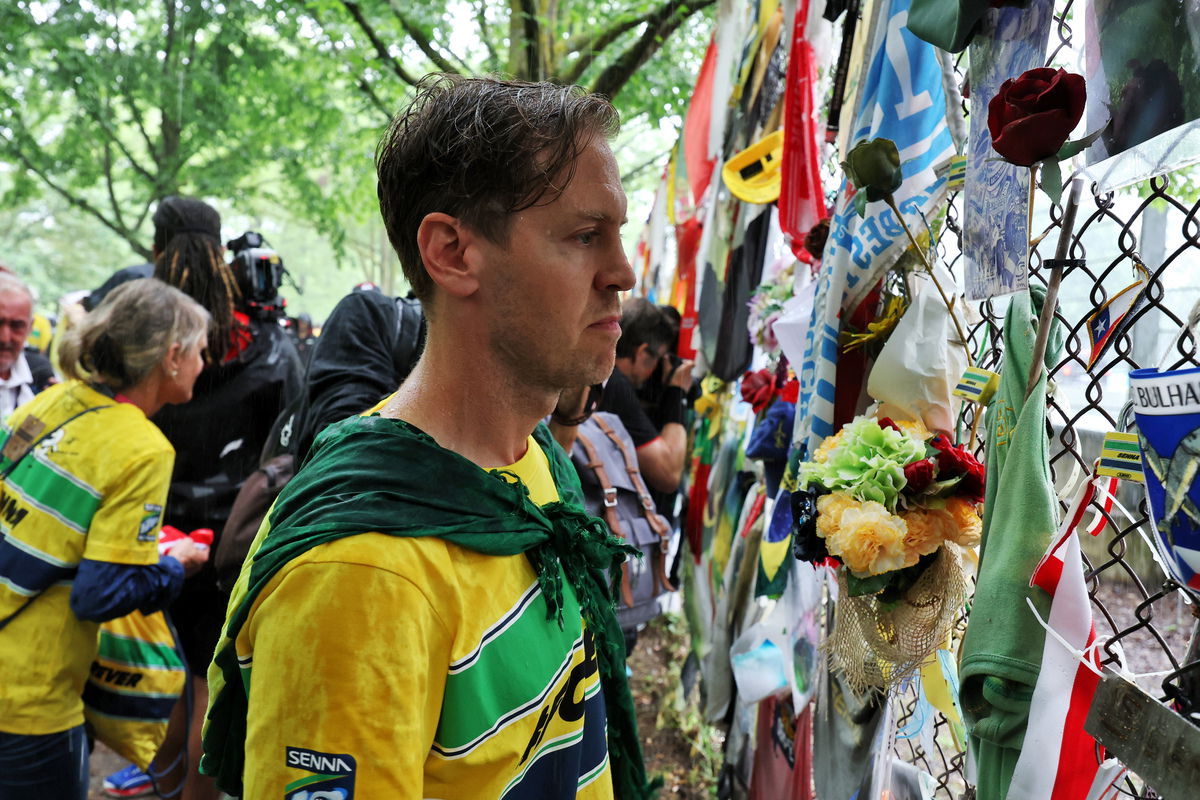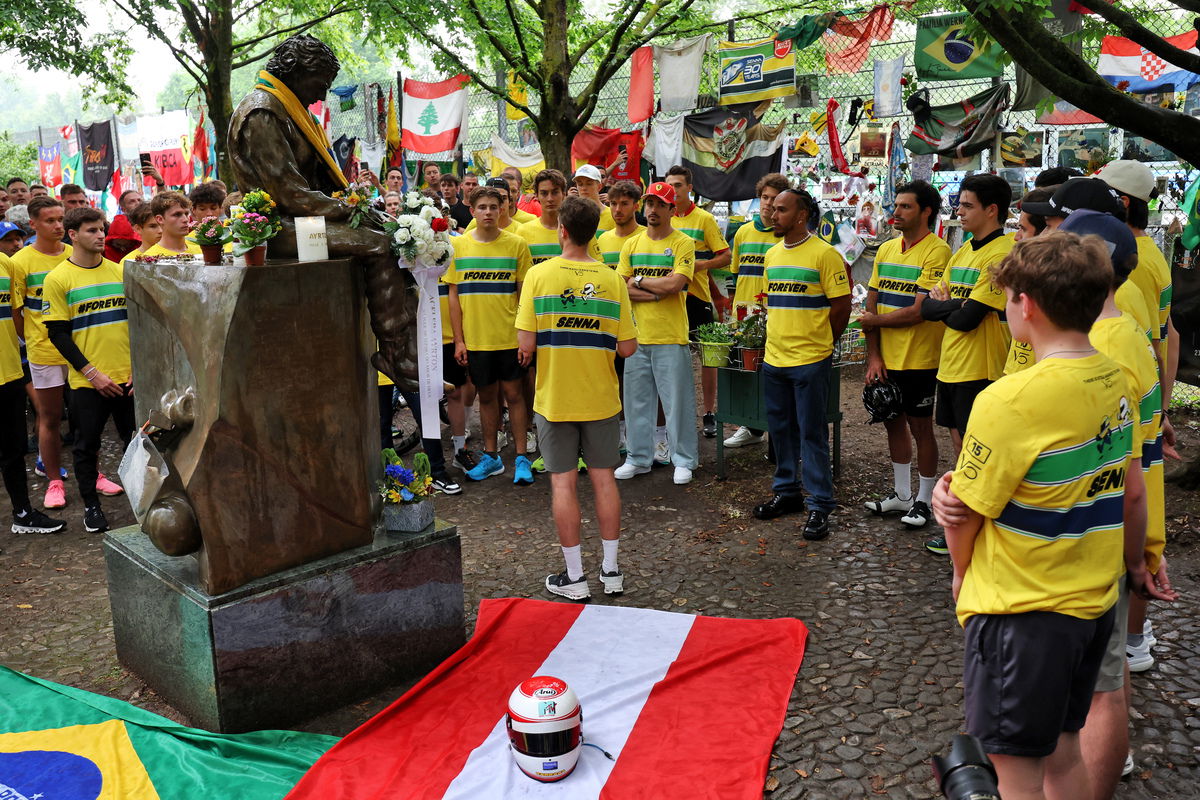

Decked out in yellow t-shirts carrying Senna’s helmet colours, the four-time world champion led a track run that stopped at the scene of the accidents of both drivers.
Somewhat poetically, torrential rain lashed the circuit as the runners reached Tamburello – the left-hand which claimed Senna’s life.
While celebrating the two drivers, Vettel used the opportunity to drive home the need for F1 and the FIA to continue improving the safety of the sport.
“It’s never fast enough,” Vettel said of the speed F1 introduces safety initiatives.
“Speeds are high and therefore danger is still there and it is still dangerous.
“But I think that after that horrible weekend, the drivers really got together, stood up, and Michael [Schumacher] was pushing a lot for the GPDA to get together and push the FIA and Formula 1 to make the tracks safer.
“All the drivers that carried on and where to follow to this day, benefit from that weekend – as funny as it may sound.
“It was an important step to push on safety standards and measures.
Prior to the 1994 San Marino Grand Prix, F1 went more than a decade without a race event fatality.
With changes to cars, tracks, and processes in the wake of the deaths of Ratzenberger and Senna, it was more than two decades before F1 suffered another death – Jules Bianchi at the 2014 Japanese Grand Prix.
“It throws up a lot of questions and, obviously, if you look at what happened and what was implemented after that – it shouldn’t take these events to do that, so yeah, the delivery is never fast enough,” Vettel opined.
“But I think it’s good that after such dark moments, we get together and try to speed things up, even though you might think things are as safe as can be beforehand.
“Thanks to that horrible weekend, as strange as it sounds, people looked into the circuits to make the tracks safer, the runoffs bigger, changing the layout, changing the cars, talking about crash structures, increasing the strength of what the chassis can withstand,” he added.
“It was a very, very dark moment in time but obviously, I was one of the drivers first-hand that benefitted from the implications when it came on all the cars that followed.”






















Discussion about this post